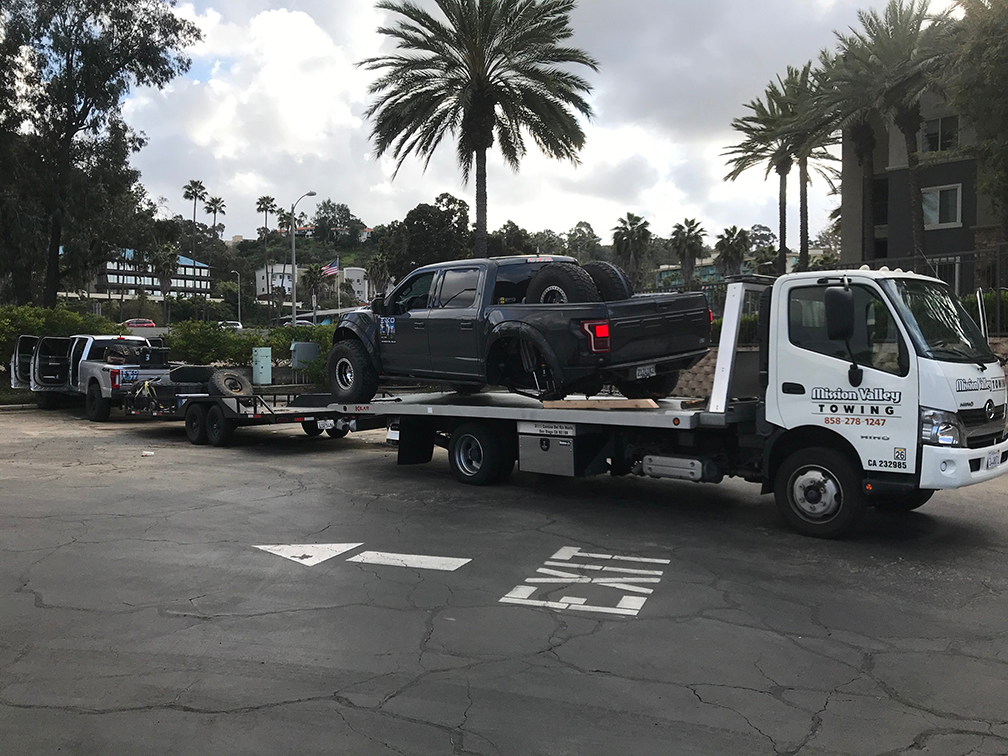Whether you’ve just downsized your tow vehicle, you rarely tow, or you’re a complete newbie to towing, here are some tips and reminders—outside of making sure your tow vehicle is in tip-top shape, and properly loaded—regarding what to do before you set out and how to get there safe.
Baby The Brakes
A few days or weeks before towing on a trip—even a small weekend trip—is a great time to check the brakes. That’s really what’s taxed when towing, even if it’s a braked trailer.
And as you’re driving, don’t ride the brakes; dab them instead in gentle pulses to help keep them from overheating. Downshift going down hills as well as up, and make sure you start a steep downgrade at a slow, responsible speed.
Bring a Spare
Getting a flat when you’re already towing a trailer can be the pits. Vacationers often remember to make sure their tow vehicle is in order but forget about the cracked old tires on their trailer. Visually check the tire tread before and during the trip, and think about getting a spare tire along with a spare wheel and wheel hub for the trailer. You’d be surprised how many trailers don’t come with a spare, and it’s the kind of thing that can ruin your entire weekend. Note: Never tow with a temporary spare installed on the tow vehicle or the trailer.
Don’t Try to Fix it Yourself
If anything goes wrong, whether it’s a flat, a wheel bearing, or more serious issues like an overheated engine, don’t try to fix it. Get some expert help from roadside assistance—and before the trip, make sure you’re covered.
Because of the additional strain on the tow vehicle, if it’s not a complete fix you run the risk of doing even more damage or causing an accident. Never try to disconnect the trailer yourself on the side of a busy highway. Using a car jack on a trailer is not going to be a safe option either.
Set Your Sights Wide
Visibility is one of the biggest hurdles while towing. Not only can you not always fully see the vehicles behind you, they might not be able to see you. That’s where the brake lights and turn signals on the trailer come into play, but it helps if you have a better, wider rearward view. Consider getting some towing mirrors, or even some wide-angle clip-ons. “This is specially true when you are towing a large vehicle or motor boat that blocks even further your rear view” – said Carlos Herrera CEO of Marine Quadrajet.
Take a Test Run
Cequent’s Hopper recommends going out on a test run to make sure you aren’t having issues with sway. Set out carefully, on a familiar road (remember to swing wide for those corners), and make sure the handling and braking feel safe. Look rearward when you can for any bouncing or swaying. Safety chains or breakaway kits need to be installed, even for a short trip, so get them adjusted and make sure they have enough give in corners. If anything doesn’t sound or feel right, take it to an expert and have them check over the entire setup.
Practice Backing Up
Backing up is intimidating, even to more experienced towers. Once the trailer’s installed, practice backing up at home or in an empty parking lot.
U-Haul recommends the following tip: First, steer with the bottom of the steering wheel, in the direction you want to go, then when the trailer starts angling in the right direction, steer from the top of the steering wheel, gently, in the proper direction.
Maintain a safe speed
Most experts advise just 55 mph as the top end for towing; in many states, it’s the law.
Slow down—more than you would otherwise—for rough roads, rain, strong winds, or other weather conditions. For any roads that aren’t divided highways, make your speed limit about 10 mph below what’s posted—especially if you have an unbraked trailer.
If you ever notice the trailer start to sway or whip, let off the gas and hold the steering wheel straight. Don’t brake, speed up, or try to counter the sway.
Leave a Distance Ahead
You need a lot more room to stop when towing a trailer. Even if you’re well within the towing limits of your vehicle, it can easily take 50 percent farther to stop.
The only way around it is to allow extra reaction distance—at least four full seconds, according to U-Haul, behind the vehicle ahead.
It also helps to think one step ahead and look a little farther ahead than usual. Don’t just watch the car in front of you. You want to watch the car in front of that.
No U-Turns
Making a U-turn with a trailer might not only be illegal in many places, even when it’s legal as a single vehicle. It places other drivers in danger, and could lead you to block traffic as you try to get into the proper lane. If you miss a turn, keep going until you find a safe, wide way to “go around the block.”
Stop More Frequently
Driving with a trailer is generally a lot more tiresome. Every turn and corner is an ordeal, and you’re likely making more adjustments to the steering wheel just to keep going straight. If you’re driving across great distances, definitely don’t expect to cover as much ground each day.
Stop for a break to stretch your legs at least once every two hours. And put that break to use by running around the vehicle, making sure the hitch and coupler are still tight, the tires look good, and vehicle and trailer still look as level as they were when you started. While you stand back, have a passenger tap the brake lights, turn signals, and running lamps, too.

